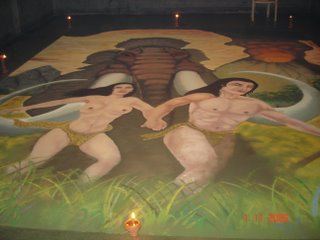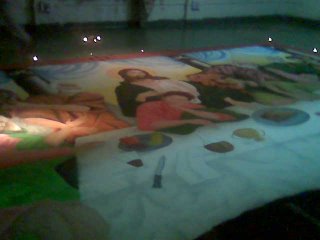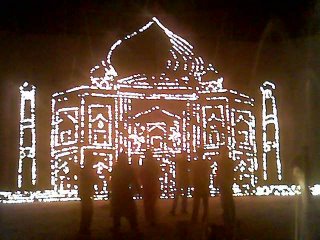
By Robert W. Lucky
I'm admiring my new laptop computer. For a while it will be my best friend when I'm traveling, but I'm already resigned to having only a transient relationship. These things are fragile and fickle, and its predecessor had betrayed me on my last business trip.
I'm sure this will be a familiar story to many readers, but there I was at the start of a long trip, firing up my trusty laptop. Well, it had been trusty. This time, however, in the middle of the boot sequence, a message suddenly popped up on the screen that read: "Disk I/O error." My computer had suffered an aneurysm. What had been a beautiful electronic machine had been converted into useless junk by the fragility of a mechanical spinning disk.
You can't live on the road these days without a laptop computer. At meetings every attendee buries his or her head in one. If you don't have a laptop, there is nothing to protect you from having to watch and listen to the speaker. And people would stare at you. Who is this person without a laptop?
My sickly five-year-old laptop had reached an age of senility, where it was far too old for expensive surgery, so I had to put it down. Using a borrowed laptop, I surfed the Web for deals. Every day for a week I checked prices, and every day they went down. I sat there frozen, knowing that as soon as I clicked "buy," I would be overcharged.
Finally, I ordered a customized laptop from a large, well-known U.S. company, which informed me that my machine would be built in two weeks. In a few days short of that time I got an e-mail telling me that my laptop had been shipped, and that I could track its status with FedEx. What a wonderful world this is! I click a mouse somewhere, bits fly through fiber optics, go to some undisclosed place, money electronically changes hands, and then atoms in useful arrangements are flown in airplanes and hand-carried to my doorstep. When you think about it, this is miraculous.
Then I wonder where my new laptop is. Can I expect it tomorrow, or will I have to wait for the next day? I am shocked to discover from FedEx that my new machine is in a pickup station in Shanghai, China. Obviously, I am going to have to wait a while.
Two days later there is new tracking information from FedEx. My laptop is on the move, but now it's resting in Almaty, Kazakhstan. I have to look this up to find out where it is, and I discover that my laptop is now marginally closer to New Jersey than it was in Shanghai. Still, I am resentful. What is my computer doing in Kazakhstan?
A few days later my laptop reaches Paris. I know where this is, and I am encouraged. Still later I get the glad tidings that my laptop has reached Memphis, Tenn.—the center of FedEx's universe. In my mind I see all the planes swooping in and the swarming exchange of packages before they swoop out. My laptop is practically home.
After two days of limbo, I am happy to find that my laptop is in a truck about 8 kilometers away. Within an hour the package is on my doorstep.
Now I'm looking at the laptop and thinking about the flat-earth theory of the new world economy. In New Jersey I order a computer from a California company, but it is assembled in China. Some of the integrated circuits are probably fabricated there, too, while other chips might have come from Japan and Korea. A lot of the design was probably done in California, and much of the software came from the state of Washington.
But where did the ideas come from that made this machine possible? Just consider some of the brilliant and complex concepts that are embedded in this little box—the laser for the DVD drive, IEEE 802.11 Wi-Fi, the TCP/IP protocol stack, Ethernet, trellis-coded modulation in the dial-up modem, sophisticated data compression and error-correcting codes, tens of millions of lines of source code, computer-aided design tools for the integrated circuits, and so on. The ideas came from your friends and mine, all over the world.
So this laptop epitomizes the world of technology today—ordered electronically, assembled with worldwide parts, delivered via a sophisticated logistics system, and replete with ingenious ideas. Yet in a world of commodity products, this brilliance is largely unappreciated.
And if this laptop dies on me, I'll stop appreciating it, too.
About the Author
ROBERT W. LUCKY (IEEE Fellow), now retired, was vice president for applied research at Telcordia Technology in Red Bank, N.J. (rlucky@telcordia.com).





 Let's become devil's advocate for a moment and ask ourselves, Why should not people plagiarise? What's wrong in sticking to reverse engineering and rejigging a tried-and-tested formula? To put it Shakespearically, If to P or not to P, that's the question, then why not P? i.e. the easier way out of the two. There are so many strict deadlines to meet, so much researh fundings to get, and there is so little time for research. Who has got the patience and time of Thomas A. Edison or Claude E. Shannon to spend so many years on single research topic? Then why is it a criminal offence? If people say it's just an act of morally-impaired researcher, let them say that. Well, I would exclude software copyright supporters vs open source movement enthusiasts from this writing. Interseted are directed to
Let's become devil's advocate for a moment and ask ourselves, Why should not people plagiarise? What's wrong in sticking to reverse engineering and rejigging a tried-and-tested formula? To put it Shakespearically, If to P or not to P, that's the question, then why not P? i.e. the easier way out of the two. There are so many strict deadlines to meet, so much researh fundings to get, and there is so little time for research. Who has got the patience and time of Thomas A. Edison or Claude E. Shannon to spend so many years on single research topic? Then why is it a criminal offence? If people say it's just an act of morally-impaired researcher, let them say that. Well, I would exclude software copyright supporters vs open source movement enthusiasts from this writing. Interseted are directed to 
